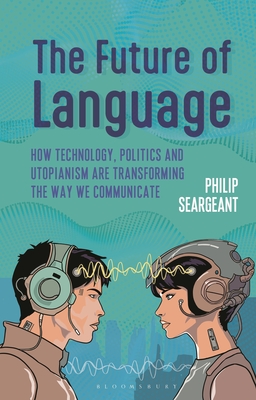
After linguist Philip Seargeant’s grandmother suffered a stroke, her thoughts remained trapped in her body. Although she had no cognitive damage, her paralysed muscles didn’t allow her to speak or write. To communicate, she would point to letters printed on one side of a tattered communication board to spell words, while the other side had some simple pictures.
The idea of typing using the mind is at the core of brain-computer interface (BCI) technology, which aims to let people type simply by imagining themselves speak. Technology giants are investing heavily in neurological research that promises to revolutionise the way we communicate with our devices and with each other – with the future aim of transferring our thoughts directly to another person.
“You wouldn’t need to talk,” said Elon Musk, founder of the brain implant company Neuralink, , adding that we could still speak for sentimental reasons.
In his new book, The Future of Language, Seargeant explores technologies like BCI, as well as AI tools such as autocomplete, predictive texting and ChatGPT and invites us to consider the implications of innovations that seem poised to transform the future of language as we know it.
He offers context from history, philosophy and literature to show how changes in communication tools impact language, which, in turn, reshapes society. The myth of the Tower of Babel, which he cites several times, suggests that humans once had a universal language and that this was considered an ideal thing. The global popularity of English has brought us close to a universal language, but machine translation does one better and promises to make us mutually intelligible to one another, without sacrificing linguistic diversity.
Seargeant reports that the science-fiction vision of a universal translation device seems close, but in a multilingual world, with over 7000 languages, there are many challenges. If machine translation can be used effectively for both text and speech as the tech companies plan, phrasebooks may soon be history. While Google Translate cannot yet be used in literary translation, machine translation may be good enough for functional purposes – except in settings like hospitals, where translation errors can have such serious consequences that we need back-up systems, warns the author.
He also reminds us that communication is largely mediated by technology owned by the multinational companies whose business model is built around selling behavioural insights gleaned from a user’s personal online experiences. Technology like BCI, augmented reality and the metaverse, will only increase the amount of such data available to the big tech companies.
And this could lead to new ways of manipulating us. For example, when AI programs compose responses for you, sometimes they suggest a reply which is better phrased than the one that occurred to you. With BCI, AI has the potential to sit directly between our thoughts and our ability to express them, writes Seargeant. Those who control these technologies will be better able to direct our behaviour – from personal spending to voting.